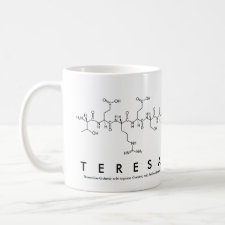
Authors: Sobiech M, Zolek T, Lulinski P, Maciejewska D
Article Title: A computational exploration of imprinted polymer affinity based on voriconazole metabolites.
Publication date: 2014
Journal: Analyst
Volume: 139
Issue: (7)
Page numbers: 1779-1788.
DOI: 10.1039/C3AN01721D
Abstract: The aim of this study was to create a new computational model capable of evaluating the affinity of imprinted materials to the specific target. A 1-(2,4-difluorophenyl)-2-(1H-1,2,4-triazol-1-yl)ethanone (L1), the main metabolite of voriconazole (L2) - a modern antifungal drug, was proposed as a template. In a computational analysis of polymerization systems composed of the template, the monomers and the cross-linker molecules the appropriate porogens were simulated. A non-covalent approach for the formation of a polymer matrix from eight functional monomers was employed in the theoretical and experimental studies. The binding affinities towards the template were measured for eight synthesized polymers. The experimental results confirmed that the proposed theoretical model properly showed isopropenylbenzene 1 as the most suitable monomer to synthesize the polymer with the best affinity to L1. The novel computational protocol was more suitable to predict the properties of polymer systems than the simple analysis of template-monomer interactions. On the basis of the polymerization complex PMC1 (template-isopropenylbenzene 1-cross-linker), the adsorption cavity was modeled and the intermolecular interactions of the template molecule and the other voriconazole metabolites inside the cavity were analyzed to get an insight into the polymer matrix selectivity
Template and target information: 1-(2,4-difluorophenyl)-2-(1H-1,2,4-triazol-1-yl)ethanone, L1, metabolite of voriconazole (L2), voriconazole



Join the Society for Molecular Imprinting

New items RSS feed
Sign-up for e-mail updates:
Choose between receiving an occasional newsletter or more frequent e-mail alerts.
Click here to go to the sign-up page.
Is your name elemental or peptidic? Enter your name and find out by clicking either of the buttons below!
Other products you may like:
 MIPdatabase
MIPdatabase









